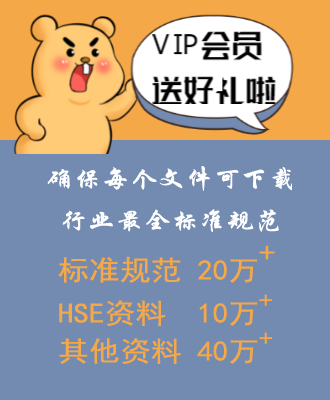

修订后的《防污公约》和《国际海运安全公约》规定的行业危险分类方法Industry approach to hazard classification under the revised MARPOL
- 资料类别:
- 资料大小:
- 资料编号:
- 资料状态:
- 更新时间:2021-09-09
- 下载次数:次
在过去两年中,在国际海事组织(IMO)中发生了几项活动,以在现有的海上运输法规的背景下,更系统地考虑固体散货货物的危险性评估。固体散装材料供应商/托运人需要遵守两项相关条例:•《国际防止船舶污染公约》,其目的是防止对海洋环境的污染。•国际海上固体散装货物(IMSBC)规则,其目的是确保固体散装货物的安全运输。根据《防污公约》关于防止船舶垃圾污染的附件五,海事组织采用了新的分类标准,以便能够查明对海洋环境有害的物质。自2013年1月1日起,托运人负责使用特定的环境分类标准评估和申报货物是否对海洋环境有害。此外,必须在2015年1月1日前评估具体的健康标准。由于上述变化,当货物被列为对海洋环境有害的物质时,不再允许将某些货物的残余物排放入海。对于此类货物,含有HME残留物的干残留物和/或冲洗水必须在足够的港口接收设施处排放。根据IMSBC准则,IMO还引入了新的分类标准,以识别仅散装危险品(MHB)。《防污公约》附件五和《国际海洋生物安全公约》准则下用于界定海洋环境的新标准取自联合国全球统一分类标签制度(GHS)。此外,对影响散装货物运输的要求,联合国GHS正逐步通过其取代现有分类系统的国家。国际金属和采矿理事会建议,所有托运人,包括煤炭托运人,应评估其货物是否符合任何新的标准,并在必要时更新货运单据,说明已查明的危险。鉴于上述监管发展和建议所有货物均应根据新标准进行评估,世界煤炭协会(WCA)的任务是通过提供以下三项可交付成果,协助其成员遵守国际海事组织的新规则:•MARPOL和IMSBC合规要求摘要关于煤炭货物的法规•全面审查煤炭的化学性质,包括鉴定煤炭、元素、矿物中的有机和无机化合物,以及与GHS分类标准相关的物理特性•煤炭生产商遵守MARPOL和IMSBC规范的指南。可交付物是由一家专门从事环境毒理学的咨询公司阿奇生产的。方法在世界煤炭协会成员之间分发了一份数据查询文件,要求提供以下方面的信息:•不同类型煤(褐煤、亚烟煤、无烟煤等)的化学成分、地理来源和不同成分的百分比。指出不同煤种的理化性质应尽可能详细。•关于特定元素/化合物溶解度的信息(金属的转化/溶解协议(T/DP)试验数据,有机化合物的含水率(WAF)。需要指出的是,上述数据只有在与这些溶解度试验中使用的煤的成分一起提供时才有用。煤样品的生态毒理学实验结果。理想情况下,观察到的(无)效应可能与这些实验中使用的煤样的已知成分有关。如果煤炭样本仅用于水暴露(即鱼类、藻类、无脊椎动物的急性试验),则对试验介质的化学分析可提供有用信息,将观察到的效应与特定化合物的浓度水平联系起来。•现有出版物(行业论文,公共领域的出版物)关于煤的组成、煤的溶解性和(生物)煤和煤化合物的可用性,哺乳动物对煤的毒性数据,煤对水生生物的生态毒理。公共领域的文献是通过科学网络数据库确定的。该数据库提供了对ISI引文数据库广泛集合的基于网络的访问。《科学引文索引》涵盖了数千种期刊,提供了完整的书目数据以及对世界范围内广泛的科学和技术学科文献的引文。
Over the past two years, there have been several activities taking place within the International Maritime Organization (IMO) to develop a more systematic consideration of hazard assessment for solid bulk cargoes in the context of existing maritime transport codes. There are two relevant regulations that suppliers/shippers of solid bulk materials need to comply with:• International Convention for the Prevention of Pollution from Ships (MARPOL), which has the objective of preventing pollution of the marine environment. • International Maritime Solid Bulk Cargoes (IMSBC) Code, which has the objective of ensuring safe transport of solid bulk cargoes. Under MARPOL Annex V on the Prevention of Pollution by Garbage from Ships, the IMO introduced new classification criteria to enable identification of substances harmful to the marine environment (HME). Since 1 January 2013, shippers are responsible for assessing and declaring whether cargoes are harmful to the marine environment using specific environmental classification criteria. In addition, specific health criteria must be assessed by 1 January 2015. As a result of the above changes, the discharge of residues of certain cargoes into the sea will no longer be allowed when the cargo is classified as a substance harmful to the marine environment. For such cargoes the dry residues and/or the wash water that contains residues from an HME must be discharged at adequate port reception facilities. Under the IMSBC Code, the IMO also introduced new classification criteria to identify materials hazardous only in bulk (MHB). The new criteria used to define HME under MARPOL Annex V and MHB under the IMSBC Code are taken from the UN Globally Harmonized System of Classification and Labelling (GHS). Further to requirements impacting on the shipping of bulk cargoes, the UN GHS is progressively being adopted by countries where it is replacing existing classification systems. It was recommended by the International Council on Metals and Mining (ICMM) that all shippers, including shippers of coal, should assess whether their cargoes meet any of the new criteria and, if necessary, update the shipping documents specifying the identified hazards. Given the above regulatory developments and the recommendation that all cargoes should be assessed according to the new criteria, the World Coal Association (WCA) was tasked with assisting its members in complying with the new IMO rules by providing the following three deliverables: • summary of compliance requirements of MARPOL and the IMSBC Code with respect to coal cargoes • comprehensive review of the chemical properties of coal, including the identification of organic and inorganic compounds in coal, elements, minerals, as well as physical properties of relevance to GHS classification criteria • guidance for coal producers for achieving compliance under MARPOL and IMSBC Code. The deliverables are produced by ARCHE, a consultancy specializing in environmental toxicology. Approach A data inquiry document was distributed among the members of the WCA requesting available information in the following areas: • Chemical composition of different types of coal (brown coal, (sub-)bituminous coal, anthracite, etc.), their geographic origins and percentages of the different constituents. It was specified that the physical-chemical characterization of different coals should be as detailed as possible. • Information on the solubility of specific elements/compounds (Transformation/Dissolution Protocol (T/DP) test data for metals, Water Accommodated Fraction (WAF) of organic compounds). It was noted that the above data were only useful when provided in conjunction with the composition of the coals used in these solubility experiments. • Results of ecotoxicological experiments with coal samples. Ideally, the observed (no-) effects can be related to the known composition of the coal sample that was used in these experiments. Where coal samples are used in water-only exposures (i.e. acute tests with fish, algae, invertebrates), chemical analysis of the testing media can provide useful information to link observed effects with concentration levels of specific compounds.• Available publications (industry papers, publications in the public domain) on the following topics: o composition of coal, properties of coal o solubility and (bio-)availability of coal and coal compounds o mammalian toxicity data for coal o ecotoxicology of coal to aquatic organisms. Literature in the public domain was identified through the Web of Science database. This database provides web-based access to an extensive collection of ISI citation databases. The Science Citation Index, covering several thousands of journals, provides complete bibliographic data plus citations to worldwide literature across a wide range of scientific and technological disciplines.
-
化学工程手册(第三版套装5册第1卷2卷3卷4卷5卷)袁渭康 王静康 费维扬 欧阳平凯 著 2021-09-09
-
石油化工自动控制设计手册(第四版) 黄步余 化工出版社 2020年 2021-09-09
-
化工过程模拟实训——Aspen Plus教程(第二版)孙兰义 化学工业出版社 2017年 2021-09-09
-
化工装置实用操作技术指南 韩文光2001年化学工业出版社 2021-09-09
-
HAZOP分析方法及实践 粟镇宇 化学工业出版社2018年 2021-09-09
-
工业除尘设备设计手册 张殿印 申丽 化工出版社 2012年 2021-09-09
-
回转窑(设计、使用与维修)沈阳铝镁设计院、长沙有色冶金设计院共同编写 2021-09-09
-
加拿大煤炭开采Coal Mining in Canada 2021-09-09
-
化工节能技术手册 王文堂 2006年化学工业出版社 2021-09-09
-
年终总结新年计划工作汇报PPT模板 2021-09-09

